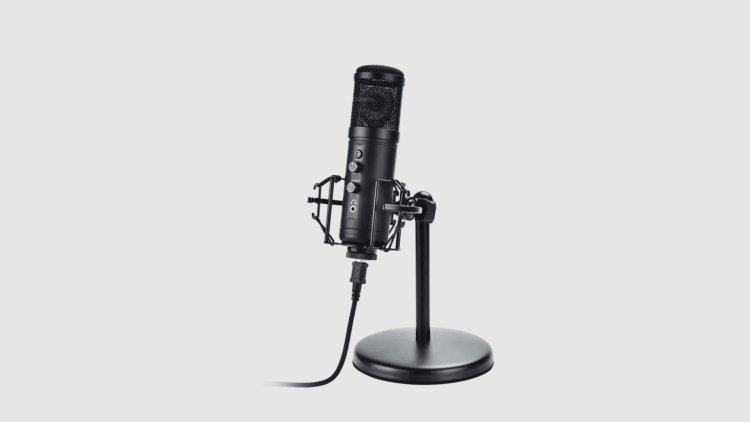USB microphone Dockin MP 2000

The MP2000 box includes the solid metal stand with a rubber base, a 16 cm long threaded metal tube that screws into the base, a microphone spider, a three-meter USB cable, the cardioid condenser microphone, and a foam pop filter (windscreen) that may be pulled over the microphone if necessary.
Software is not included in the bundle, although considering the low price, it is not unreasonable to anticipate it. Most people will edit their videos with traditional editing software or make live feeds with OBS.
Dockin's MP2000 was developed with simplicity in mind, but it still fits the basic needs of a studio microphone. It's a cardioid condenser microphone, so you'll be speaking or singing into it from the front.
If you record from above or from the side, the recording quality suffers significantly. When recording, you should keep this in mind. The MP2000 has a rotary gain control that regulates the microphone's sensitivity.
Headphones, such as earbuds from a smartphone, can be used for monitoring via a 3.5 mm aux socket. A rotary control governs the AUX output. This is actually typical practice and is followed by the majority of manufacturers.
There is also a red LED with an on/off switch that flashes when the microphone is turned off and illuminates when turned on. Another LED sits beneath the metal mesh, creating a comfortable ambiance with gentle color changes but serving no other purpose.
What the MP2000 lacks is an LED indicator that indicates clipping during recording. However, it is critical to avoid clipping when making an audio recording. As a result, a different solution is chosen.
The Dockin MP2000 impresses with a particularly clean and pure speech recording in the voice quality test recordings. We also didn't notice any lags between the recording and the vocal output as monitored through headphones.
The inherent ability of condenser microphones to modify the recording based on the distance to the microphone is an advantage, or perhaps a negative, depending on how you look at it. The voice becomes more voluminous as you got closer to the microphone.
The more you move away from the source, the more "room reverberation" is added, making basses disappear and trebles more noticeable. Using this effect with the Dockin MP2000 works great, especially if you have the pop protection turned on.
Only when the recording is very close to the microphone does it go completely into overdrive, which is immediately noticeable with deep bass hissing and distortion. So you can tell when you're getting too close to the microphone.
Price: $90.





























